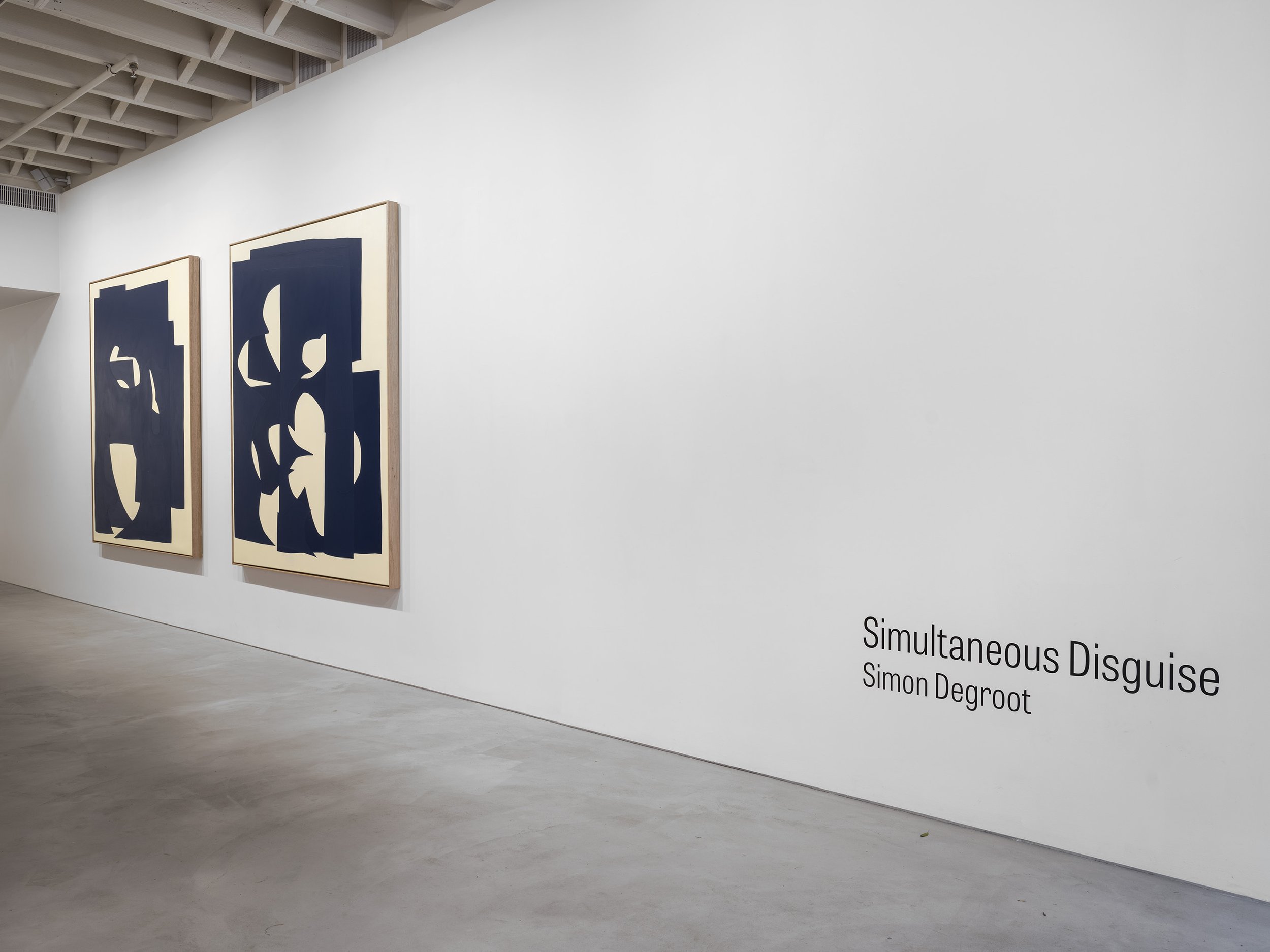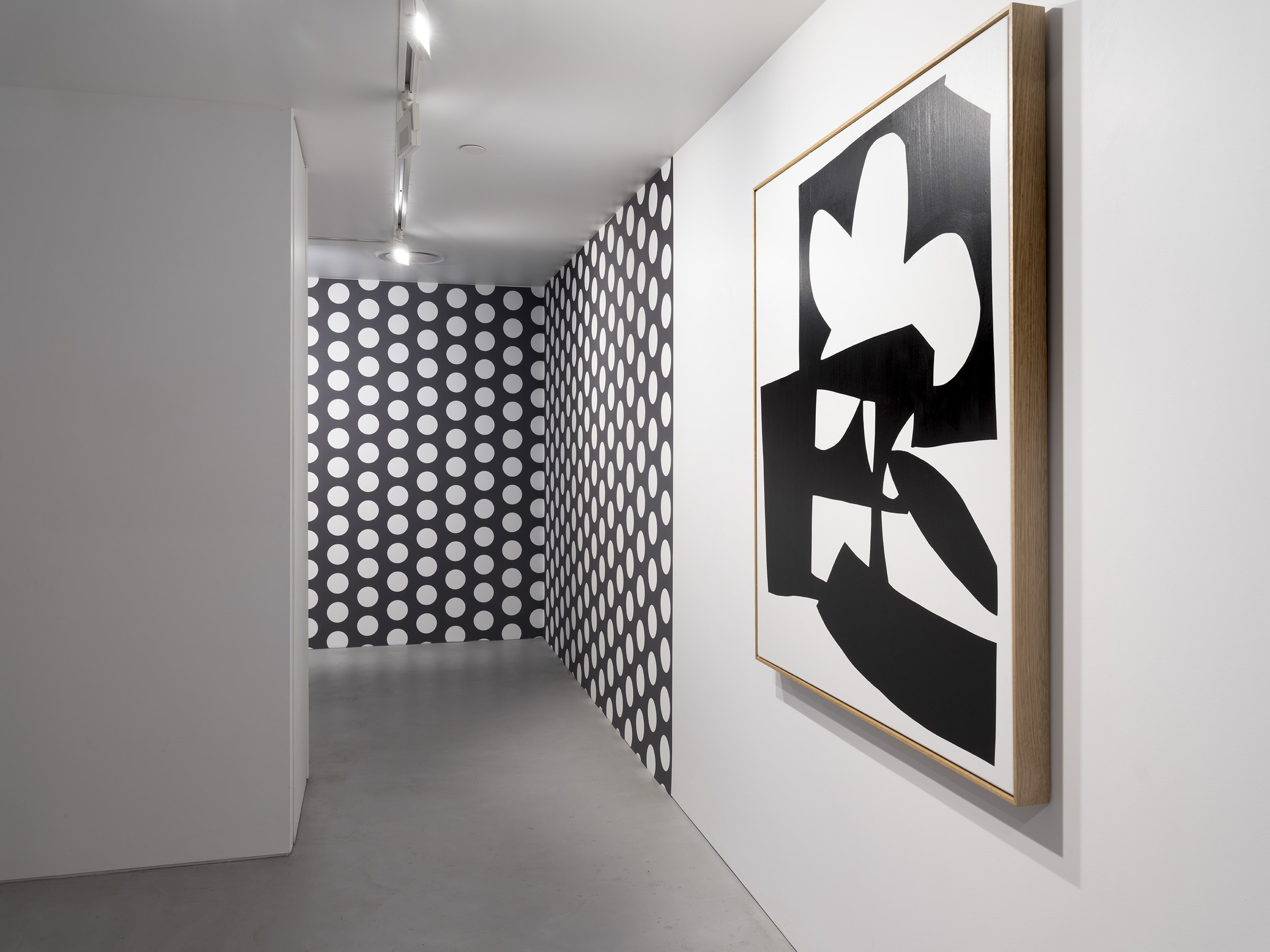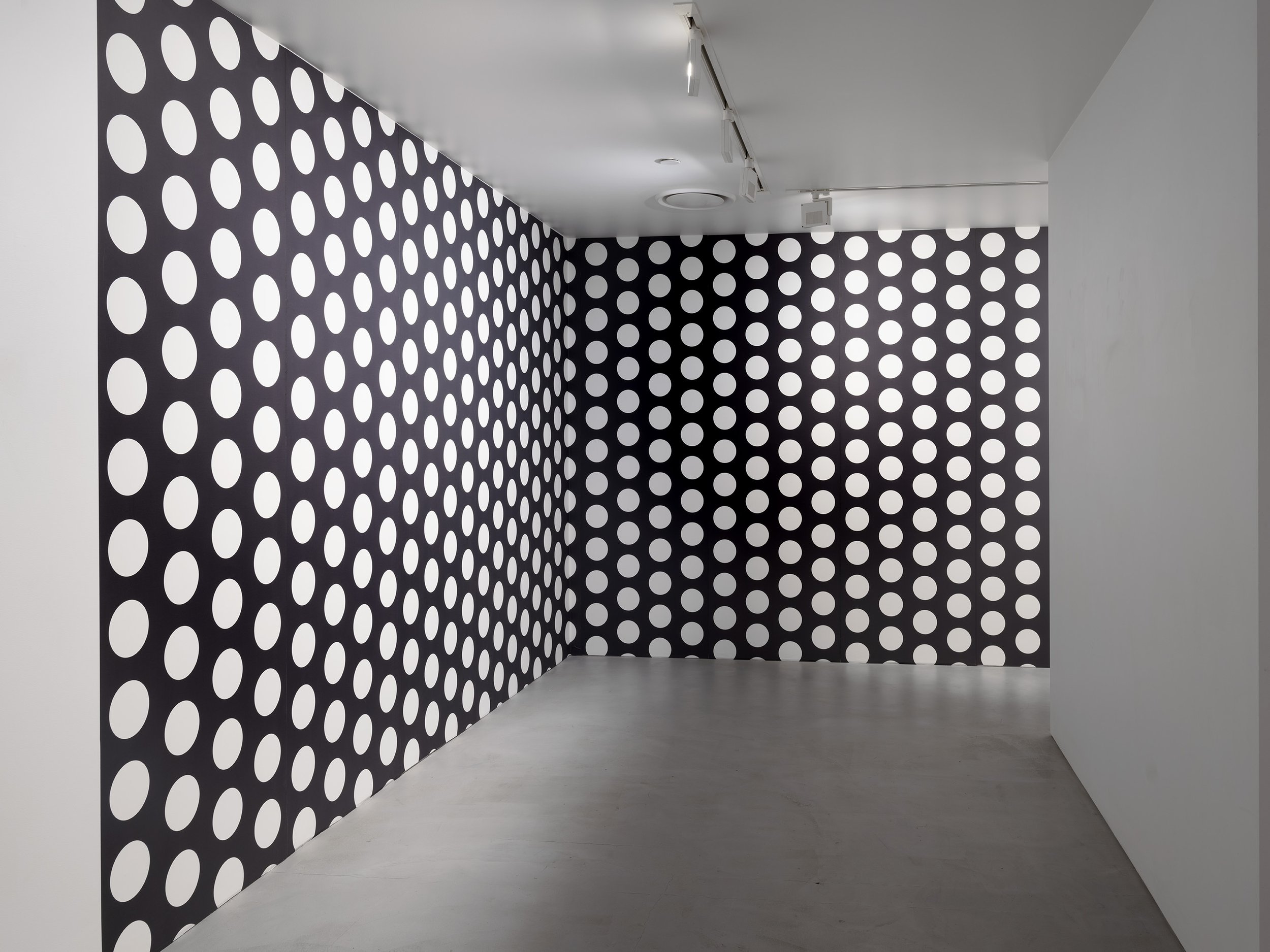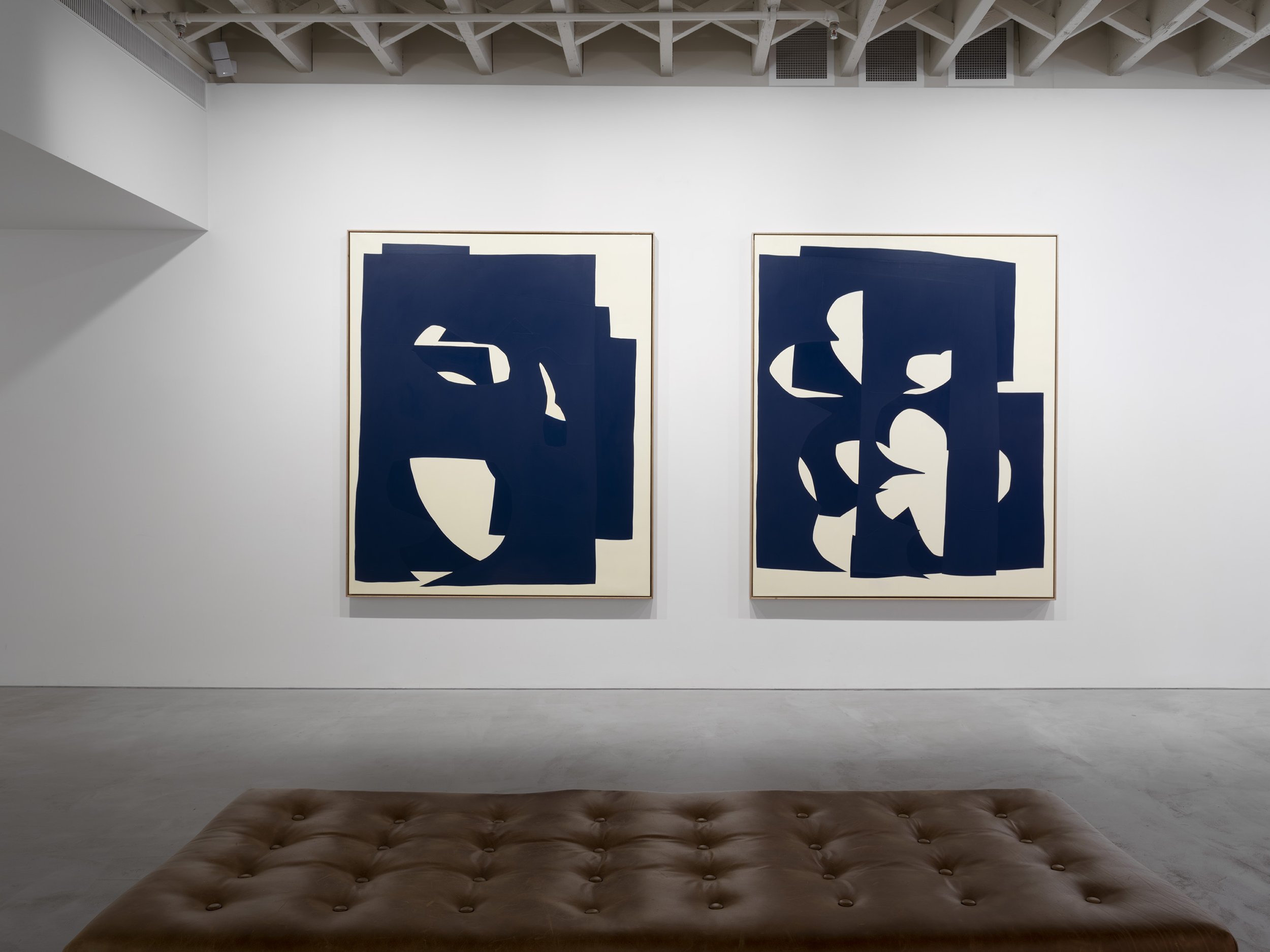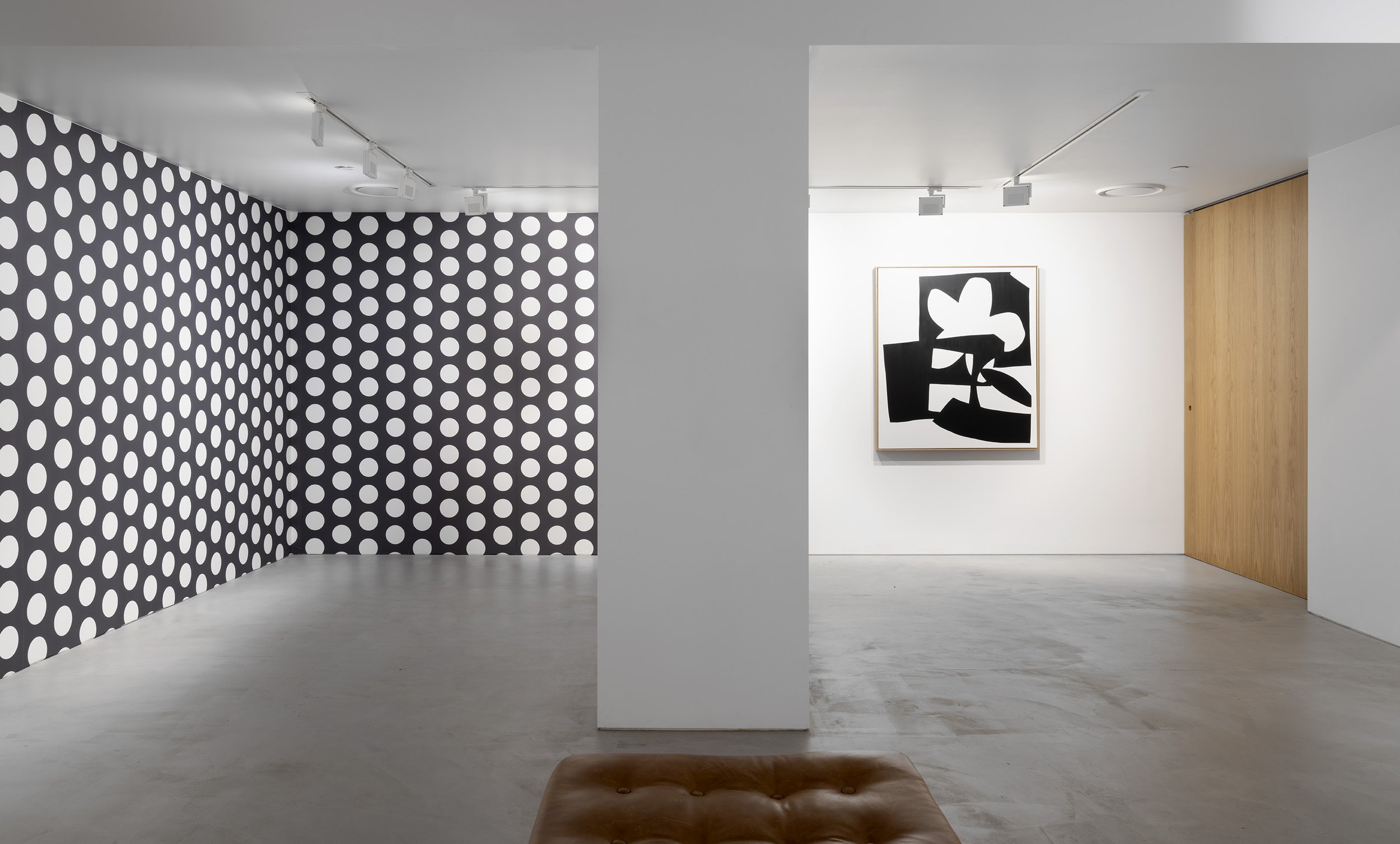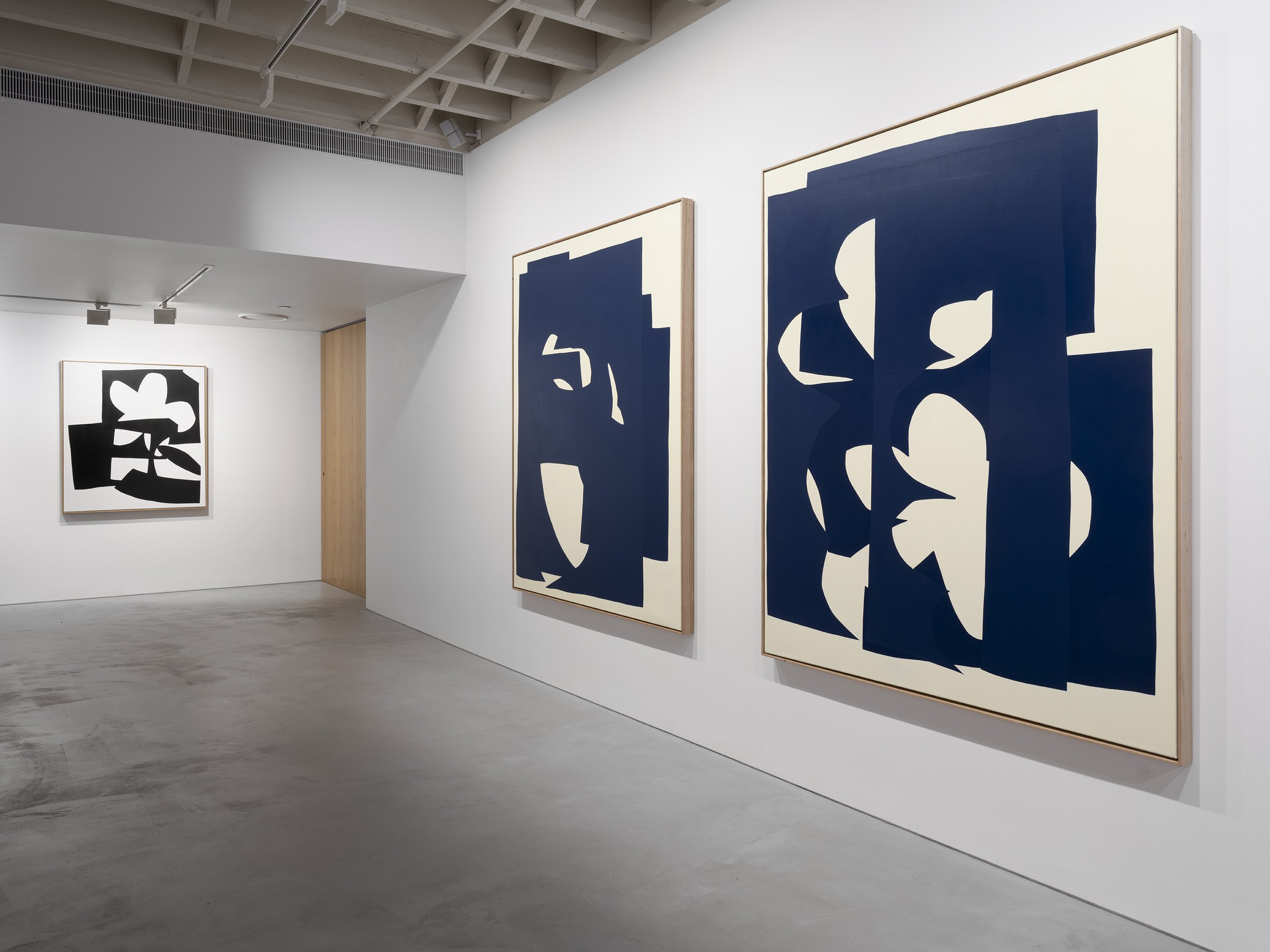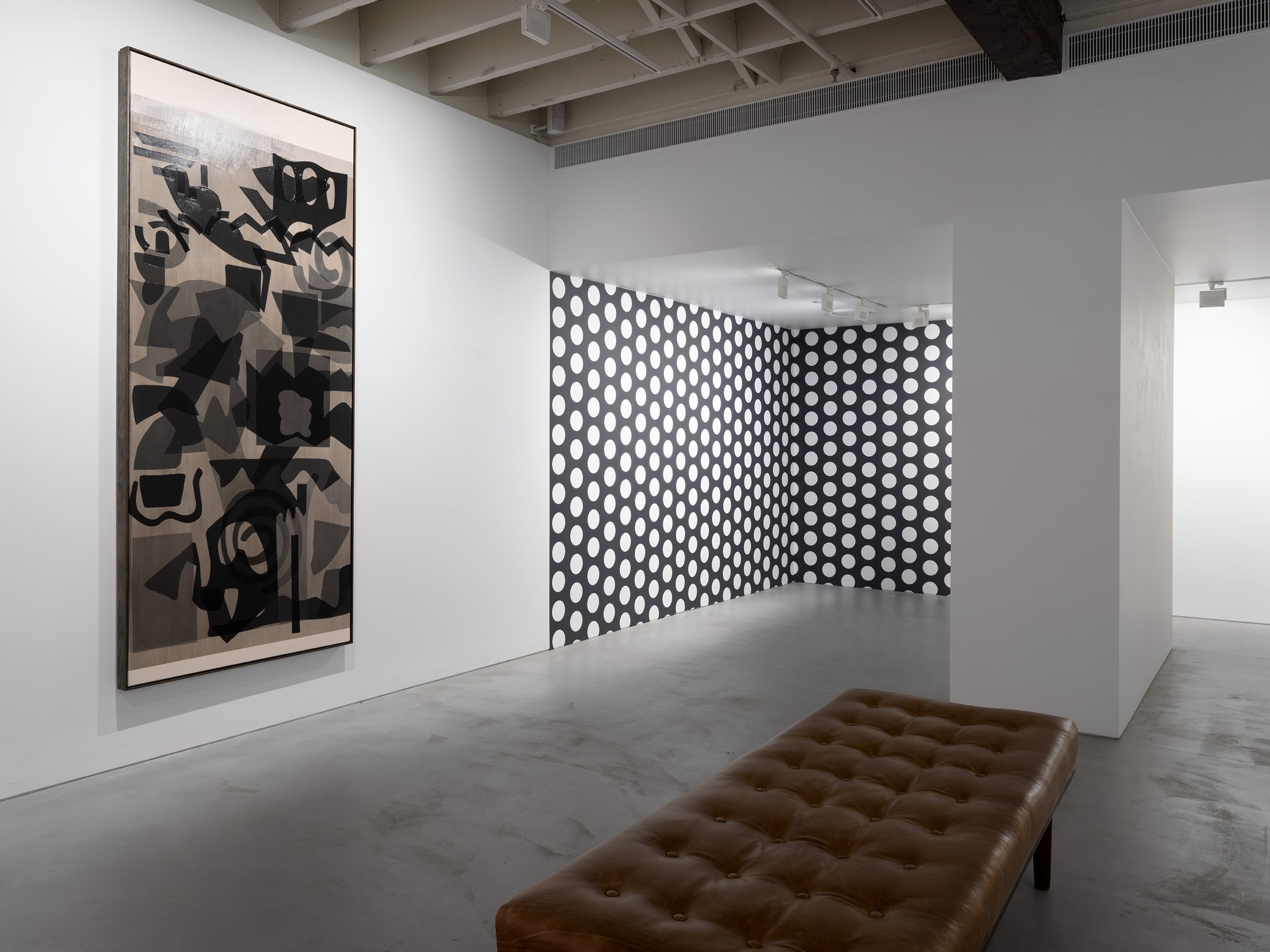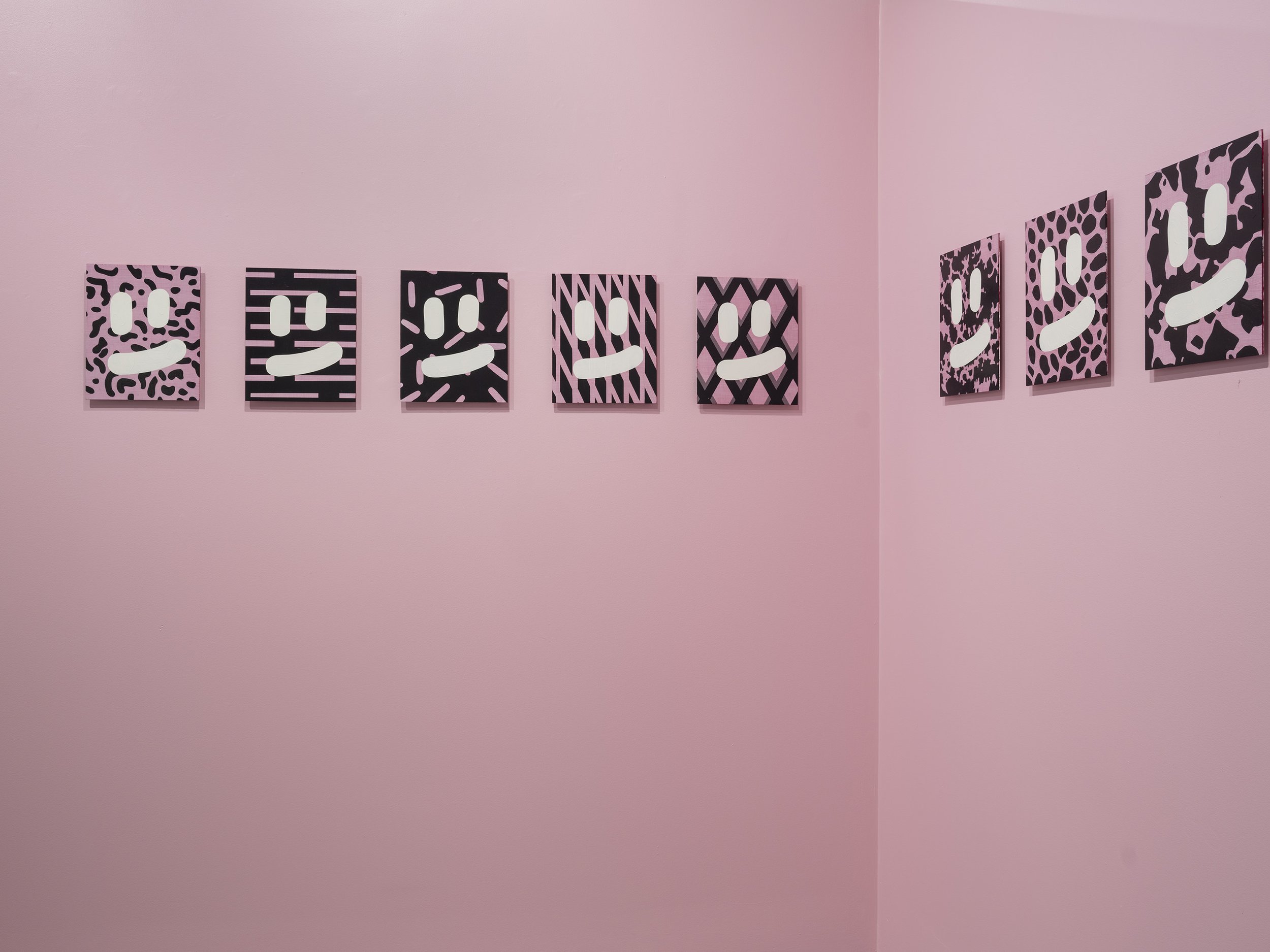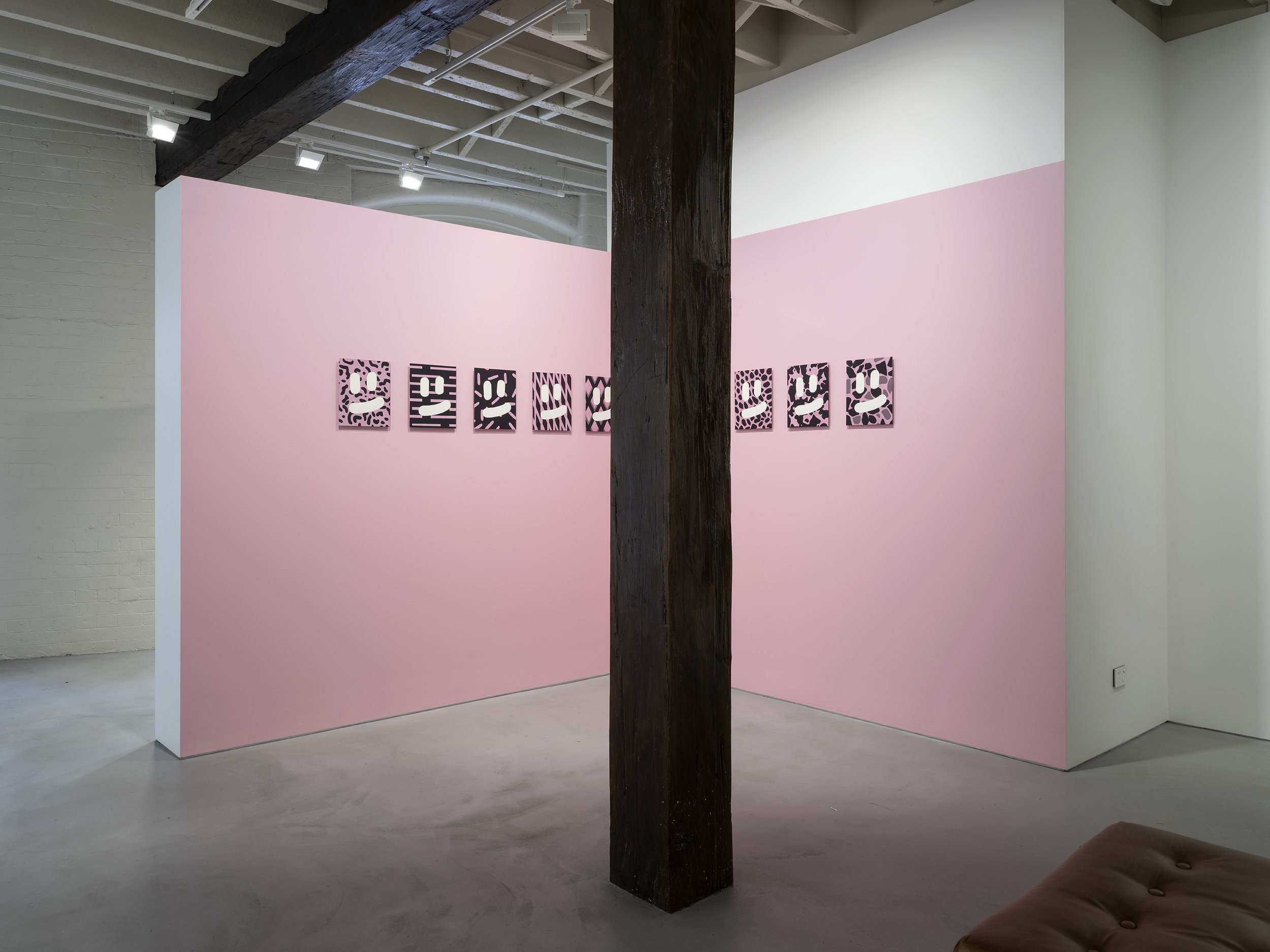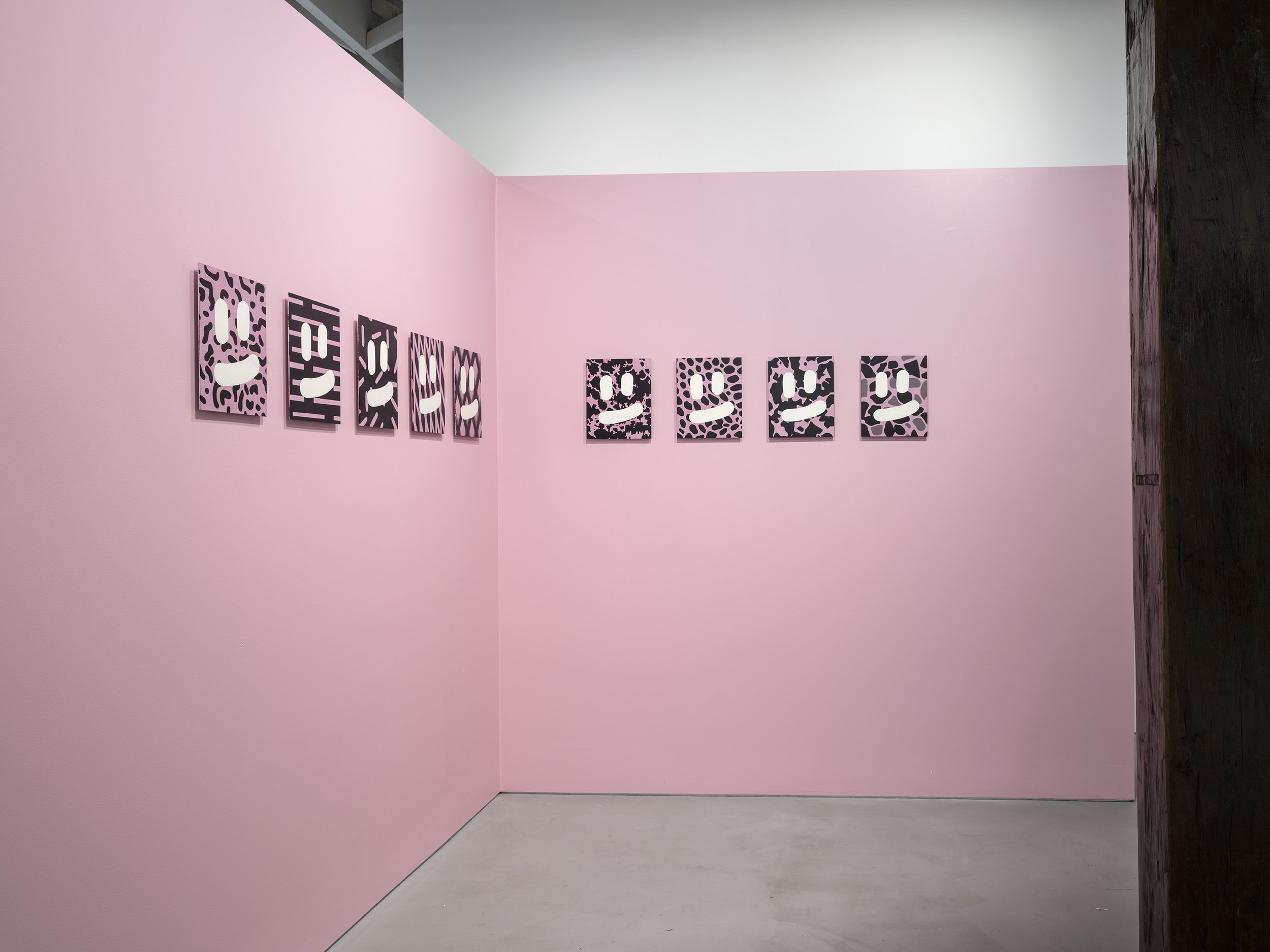Exhibition
Simultaneous Disguise, 2022
Jan Manton Gallery, Brisbane
In Simultaneous Disguise, all the works reveal evidence of their history through close examination of the painted surface. I’m fascinated by the possibilities of a flat surface. How can we use layering to better understand ideas of concealing and revealing? What happens when the most visible, anterior, or frontal form is hiding something that is behind? What does this tell us about visibility and appearances? How can painting help us understand more about the politics of seeing versus not seeing? - Simon Degroot
Exhibition Essay // Louise R Mayhew, 2022
Blocking out the majority of his canvas, Simon Degroot paints a large, delightfully pink and deliberately off-kilter asterisk. Slowly tracing its contours reveals a playful tension between the digital perfection of its source (the little star of typography) and the human error of the artist’s hand. The final stroke—a diagonal line that travels from bottom left to upper right corner—is especially evocative, its gentle curve suggestive of other soft, fleshy forms.
Shifting our gaze beyond the asterisk reveals a complex background of layered black, grey and cream. It’s equally difficult and enjoyable to deconstruct these layers. Within a grey rectangle almost akin to the edge of the canvas, yet also intentionally off-centre, Degroot paints large black polka dots. Their diagonal stripes also travel from lower left to upper right. Two round erasures and a missing rectangle of black and grey point to Degroot’s analogue process. Via their absence, it's possible to imagine the artist quite literally cutting out elements of the work. Finally, a cream ground is filled with in/distinguishable black shapes, among them a Matissean flower and a childlike archway.
Asterisk is visually in keeping with Degroot’s practice. His oeuvre typically interweaves simplicity and complexity, confusing foreground and background, figuration and abstraction, flatness and texture, digital and analogue processes, in a tightly restrained colour palette. Around the gallery, these same aesthetic choices can be located within Simultaneous Disguise 287 and Simultaneous Disguise 288, which showcase Degroot’s use of positive and negative shapes, and his multiplying smiley faces, which highlight the possibility of reading meaning in the simplest of graphic dashes. In this case, three white oblongs compose a blank and unsure yet nevertheless bright vitality.
Asterisk also symbolises Degroot’s habit of locating meaning elsewhere. In the past, this meaning has often taken the form of architectural referents, his paintings pointing to shapes in the built environment. In this body of work, Degroot casts his referential net further afield, gesturing to artists, designers, printmaking and his own earlier works.
Degroot’s Whirling Hop and Skip After SJ combines the compositions of Whirling dervish ou Indian flight (1986) and Hop and Skip (1987), by American French artist Shirley Jaffe, while stripping them of Jaffe’s clear, bright palette. The simulation is both recognisably Degrootian in its translucent layers and unfamiliar due to its new vocabulary of shapes. Degroot clarifies, Jaffe sought to rid her paintings of any potential similarities to known shapes. By remaking her work, Degroot rather cheekily undoes her intention. Referents to all of her forms in these works now exist in his own.
Across his smaller canvases, Degroot recreates patterns by Ettore Sottsass, Italian architect and lead designer for the Memphis Group. The collective epitomised Postmodernism’s “poor taste,” creating kitschy, Pop-inspired work at the intersection of art and design. Prior to spreading across Degroot’s canvases, Memphis design and its innumerous knock offs were aesthetic markers of our shared 1980s childhoods, decorating pencil cases, Summer clothing and morning cartoons. As Degroot explains, in his re-imaginings he deploys Sottsass’ surface pattern designs as a substrate for intervention, sublimating the schoolyard gestures of scratching and graffitiing into productive, creative forms. Traces of childhood rebellion remain in the artist’s use of pink, patternation and design.
Open Relief turns the referential compass toward printmaking and Degroot’s own history as a commercial printer. Viewed in real life, the work is clearly a painting. Both black and white forms are lined with traces of paint. Yet viewed online, where the reality of scale and details of surface disappear, the work could be mistaken for a print: four shapes stamped onto a white plein. Degroot’s colour palette—blue, pink, yellow and black—also points to CMYK, printing’s four building blocks of colour. Open Relief showcases Degroot’s mastery of composition. There’s a surety and liveliness in his mildly teetering, yet ultimately stable, balance of forms.
Degroot’s two remaining works, Simultaneous Disguise 287 and Simultaneous Disguise 288, shift attention from his past to his present. In their extreme flatness, and delicate ripples of texture where one field of paint encounters and moves over another, Degroot continues to ask: “Why am I interested in the flat surface?” and “Why am I interested in intervening in that flat surface?” These questions, like this larger body of work, locate Degroot within a lineage of artists and designers who also sit, simultaneously, between two zones: of art and design, high and low, biophilia and hard-edge abstraction.
But it’s Degroot’s use of the word disguise that surprises me. When I ask if these works stand in for the artist, he replies “Of course. All paintings are an analogue version of yourself.” At the heart of Degroot’s practice lie the acts of de- and re-construction. In this body of work, Degroot reveals the same imperative to take apart, and put together, elements from his own life. The resulting works pay homage to a uniquely millennial visual vocabulary: self-reflexive, finely-calibrated and confident.
28 Sept - 15 October 2022
Images courtesy: Carl Warner
